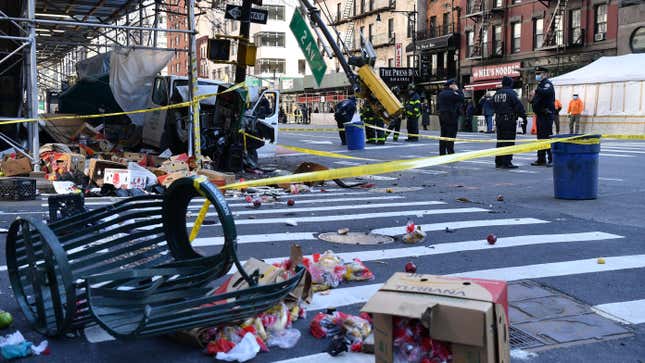
Traffic deaths in the U.S. surged in 2020 to the highest level since 2007 and experts in the U.S. government believe they know why. Despite driving fewer miles during the covid-19 pandemic, Americans involved in car crashes were taking more risks, including everything from not wearing their seatbelts to driving drunk.
A new study from the National Highway Traffic Safety Administration estimates that 38,680 people died on U.S. roads in 2020, a 7.2% increase over 2019. But the number of vehicle miles driven in 2020 was down 13.2%, according to the NHTSA.
“NHTSA’s research suggests that throughout the national public health emergency and associated lockdowns, driving patterns and behaviors changed significantly, and that drivers who remained on the roads engaged in more risky behavior, including speeding, failing to wear seat belts, and driving under the influence of drugs or alcohol,” the NHTSA said in a press release.
“Traffic data indicates that average speeds increased throughout the year, and examples of extreme speeds became more common, while the evidence also shows that fewer people involved in crashes used their seat belts,” the statement continues.
Why did Americans seem to engage in more risky behavior on the road during the covid-19 pandemic? That part isn’t clear yet. But the study’s findings show motorcyclist deaths were up 9% over 2019, with 5,015 dying on motorcycles, while pedestrian deaths from cars were basically flat compared to 2019, with 6,205 pedestrians dying.
Other interesting crash factors found in the study, compared with 2019:
- non-Hispanic Black people (up 23%);
- occupant ejection (up 20%);
- unrestrained occupants of passenger vehicles (up 15%);
- on urban interstates (up 15%);
- on urban local/collector roads (up 12%);
- in speeding-related crashes (up 11%);
- on rural local/collector roads (up 11%);
- during nighttime (up 11%);
- during the weekend (up 9%);
- in rollover crashes (up 9%);
- in single-vehicle crashes (up 9%) and;
- in police-reported alcohol involvement crashes (up 9%).
“Safety is the top priority for the U.S. Department of Transportation. Loss of life is unacceptable on our nation’s roadways and everyone has a role to play in ensuring that they are safe. We intend to use all available tools to reverse these trends and reduce traffic fatalities and injuries,” Dr. Steven Cliff, NHTSA’s Acting Administrator, said in a statement published online.
“The President’s American Jobs Plan would provide an additional $19 billion in vital funding to improve road safety for all users, including people walking and biking. It will increase funding for existing safety programs and allow for the creation of new ones, with a goal of saving lives.”